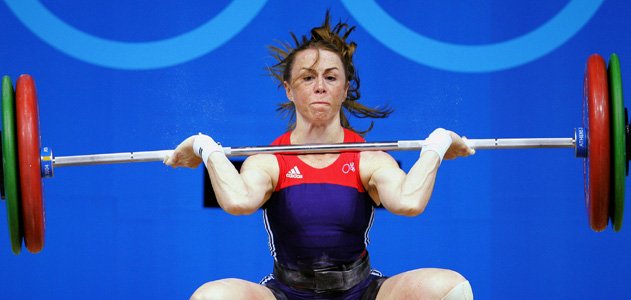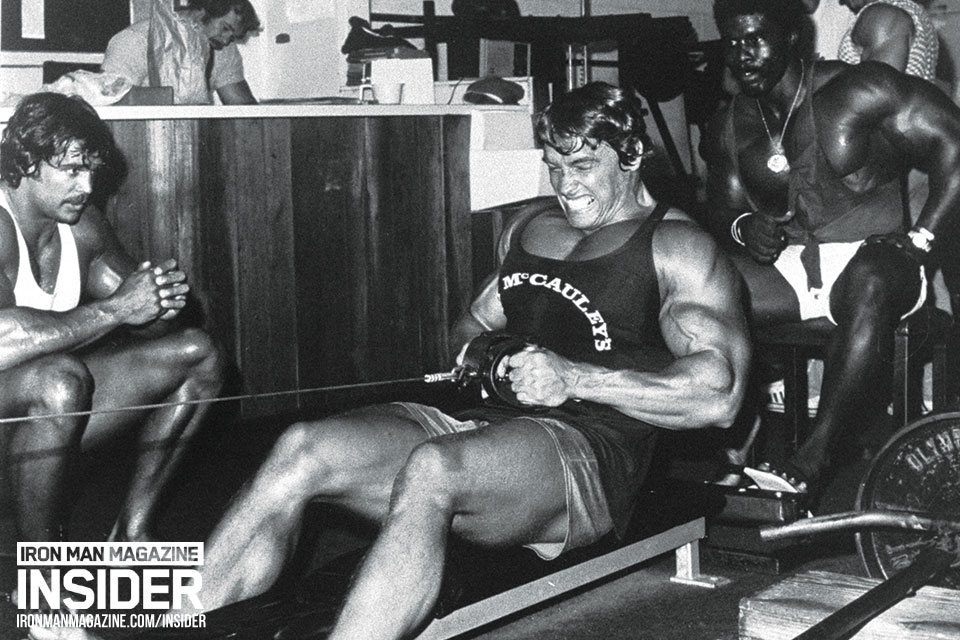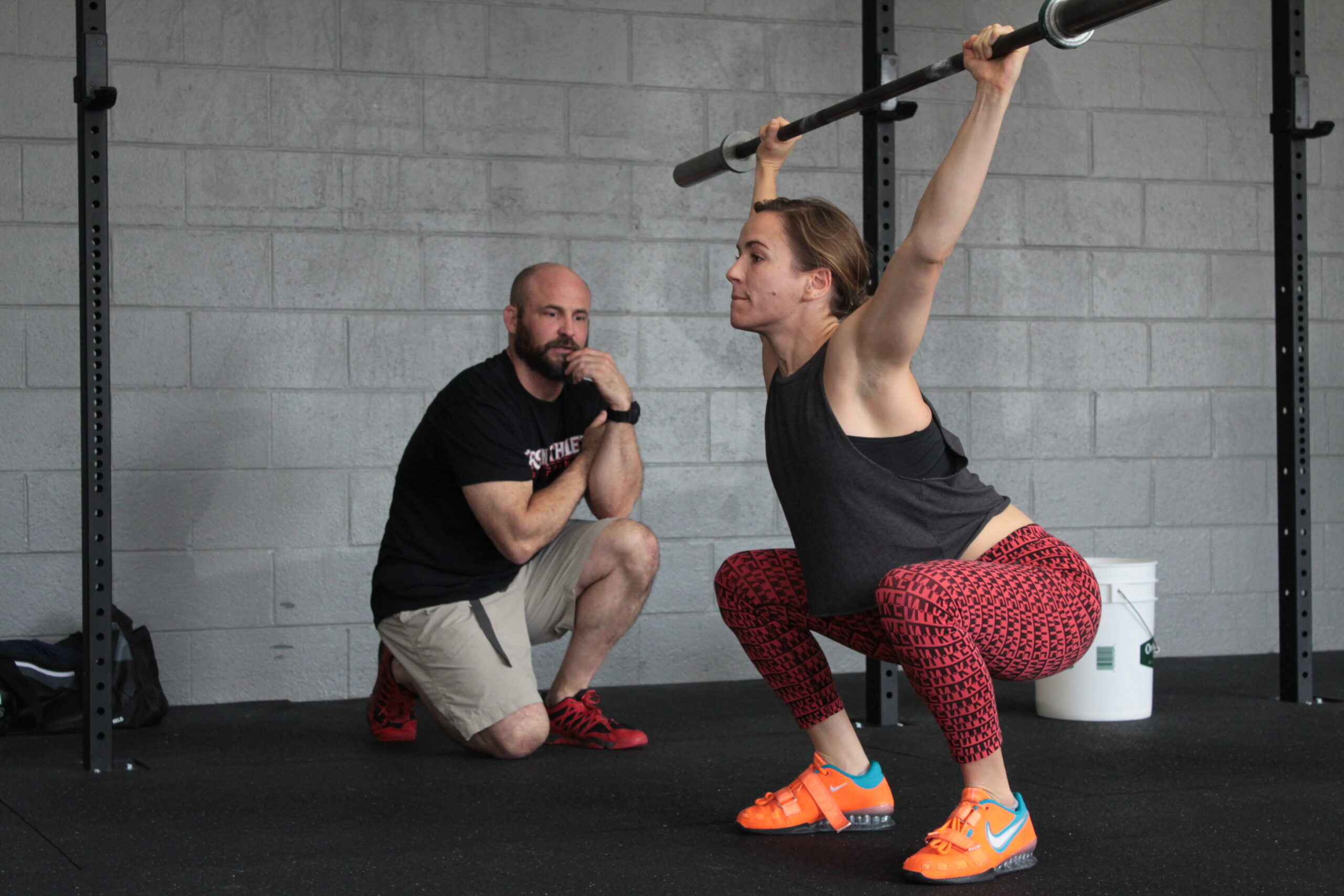The functional fitness movement was to some degree a backlash against the commercialization of fitness.…

Staying Calm and Making History: Interview with Tara Nott Cunningham
In 2000, Tara (Nott) Cunningham became the first American weightlifter to win an Olympic gold medal in 40 years. This was also the inaugural year for women’s weightlifting as an official Olympic sport, making Tara the first women’s Olympic gold medalist in history. If that weren’t enough, she is the only person to have trained at the Olympic Training Center in three different sports: gymnastics, soccer, and weightlifting. On paper, Tara should be larger than life. In person, she is 5’1” and soft spoken, though with a quiet confidence that no doubt factored into the 185kg total she put up on the Olympic platform. Our paths crossed by chance—we live in the same city. On occasion, though, she has generously spared what little free time she has to coach a few of our members and coaches through the Olympic lifts. As a coach, Tara is sharply insightful. For someone who claimed her first national title with less than a year in the sport, she is surprisingly patient with athletes of all levels. Knowing how busy she stays these days, I am grateful for the time she has spent with our community, and for the opportunity to speak with her about this bit of weightlifting history. Thanks again, Tara.
Can you speak a bit about your athletic history and what brought you to weightlifting?
My parents enrolled me in gymnastics when I was 4, after I tried an arial cartwheel and landed on my head. I tried this after watching Nadia Comaneci compete in the 1976 Olympics. As a gymnast, I trained 5 days a week, for over 3 hours a night, for many years before I had to make a choice –to give up all other sports for gymnastics. At about 13, I decided to give up gymnastics and continue playing other sports. In middle school I ran track, played basketball and soccer. Then in high school I played volleyball, basketball, and soccer. Throughout those years I also played on travel soccer teams. At, 13 I played on a u19 team that won Nationals. I was also selected for the u16 National team and the u19 National team, but at the time those teams were paper teams and didn’t travel anywhere to play. I played on 3 Olympic Festival soccer teams, with the last one in 1995. I went to Colorado College on a soccer scholarship from 1990-1994 where I played in two Division 1 Final Fours. After college, I went to work for the Olympics in Atlanta. I worked in the Sports Department for soccer, and there I learned Olympic Weightlifting.
What were your expectations leading up to the 2000 Olympic Games, and how did the actual experience match up?
Going into 2000, I really thought I could place in the top five in the world, but I really tried to focus on performing to my ability and not worrying about placing. I knew I could only control my performance so that is what I focused on. During the competition, I sat with a towel over my head so I wouldn’t watch what other lifters were doing. My coach would tell me when to warm up and when to go out for my attempts. After my last lift, I had no idea what place I was in. I was actually frustrated with myself for missing 105kg and sat down and said, “Gosh…what place am I in?” That was when my coach told me I was in 2nd place. My expectations for myself going into the Olympics was to snatch 85kg and clean and jerk 105kg. Both of those lifts would have been a PR. In the competition I did 82.5kg and 102.5kg, which tied the PR’s I had just set at the Olympic Trials.
Over the years you’ve also sustained (and trained with) quite a few injuries. Can you speak a bit about that and how you worked with/around them?
One of the main injuries I sustained during my lifting career was a sports hernia (torn abdominal muscle with no herniation). I actually don’t know if it was from weightlifting. My doctor said they usually see these types of injuries in soccer, hockey, and volleyball players, who have more lateral movements in their sports. It is not very typical for weightlifters. For me, it could have started in my years as a gymnast and soccer player.
Nevertheless, I trained from the 1999 World Championship through the 2000 Olympic Games with this injury, but wasn’t diagnosed until after the Olympics. At times, I couldn’t train because of the pain so we definitely had to modify my training for the Olympic Trails and the Olympics. If you look at my lifts from the 2000 Games you can see that I am shifting weight over to my left side because the abdominal tear was on the right. My technique and body compensated for the injury.
After the 2000 Games I had a bilateral hernia repair where they put gortex mesh across the front of my lower abdominal and the mesh was tacked down with 21 small titanium screws. At the time of my surgery, they were unsure how the mesh would hold up after having children. Without the surgery, I felt my lifting career would be over, but with the surgery I did not know if I would be able to return to top shape.
I’m always curious how top-level athletes deal with the pressure of competition lifts when there’s so much at stake. What goes through your head before you step on the platform? How do you get yourself focused?
I did a lot of visualization to prepare for the Olympic Trails and the Olympics, which helped me to stay calm and deal with the pressure of an Olympics. I also tried not to focus on my competitors. When I first began lifting, I would look around in the warm up room and get caught up in how good everyone else looked and then get nervous. I learned over time to focus on the one thing I was doing—lifting, and to shut everything else out. Going into a competition, I have weights in my head I would like to make and I focus on that.
In the 2000 Olympic Games, my coach decided to open me with 80kg in the snatch. This was a weight I had only hit once in a competition at 48kg, which was at the Olympic Trials. I had very little time to refocus. In the months leading up to the Games, though, we had spent a lot of time getting me mentally focused and teaching me to stay calm during the chaos. I think that prepared me for this moment, to readjust quickly and concentrate on the challenge ahead of me.
Who (or what) would you say were your major influences in weightlifting?
Two major influences in my weightlifting career are Mike Gattone and Lyn Jones. Mike Gattone introduced me to weightlifting while I was working at the 1996 Olympics for the sport of soccer. He was my first coach and trained me early morning before work. Late in 1997, I moved to the Olympic Training Center to be one of the first females to train in the women’s resident program. Lyn Jones became my coach when I moved to Colorado. They both believed in my ability and really guided me through the sport.
I’ve had the fortune of seeing you work with some athletes at CrossFit LionHeart a few times, and there are definitely some reoccurring trends. For example, I notice that you spend a lot of time working with people on finishing their pull. Are there other common “mistakes” that occur with less experienced lifters?
When I first started weightlifting I had a tendency to cut my pull and finish my lifts forward so it is something I try to work on beginning lifters.
What would you say is your most powerful memory from your weightlifting career?
My most powerful memory from my weightlifting career was standing on the medal podium at the 2000 Olympic Games. I took second on the day of competition and can still remember the excitement of stepping onto the second place medal podium, having the medal placed around my neck, seeing the American flag raised with my family in the audience cheering. Three days later, I received a call saying the first place medalist tested positive and I would now receive the Gold medal. The IOC scheduled my medal ceremony in the village at the same time my teammate Cheryl Haworth would be lifting, so I went to watch Cheryl lift and a USOC representative accepted the Gold medal for me at the ceremony.


